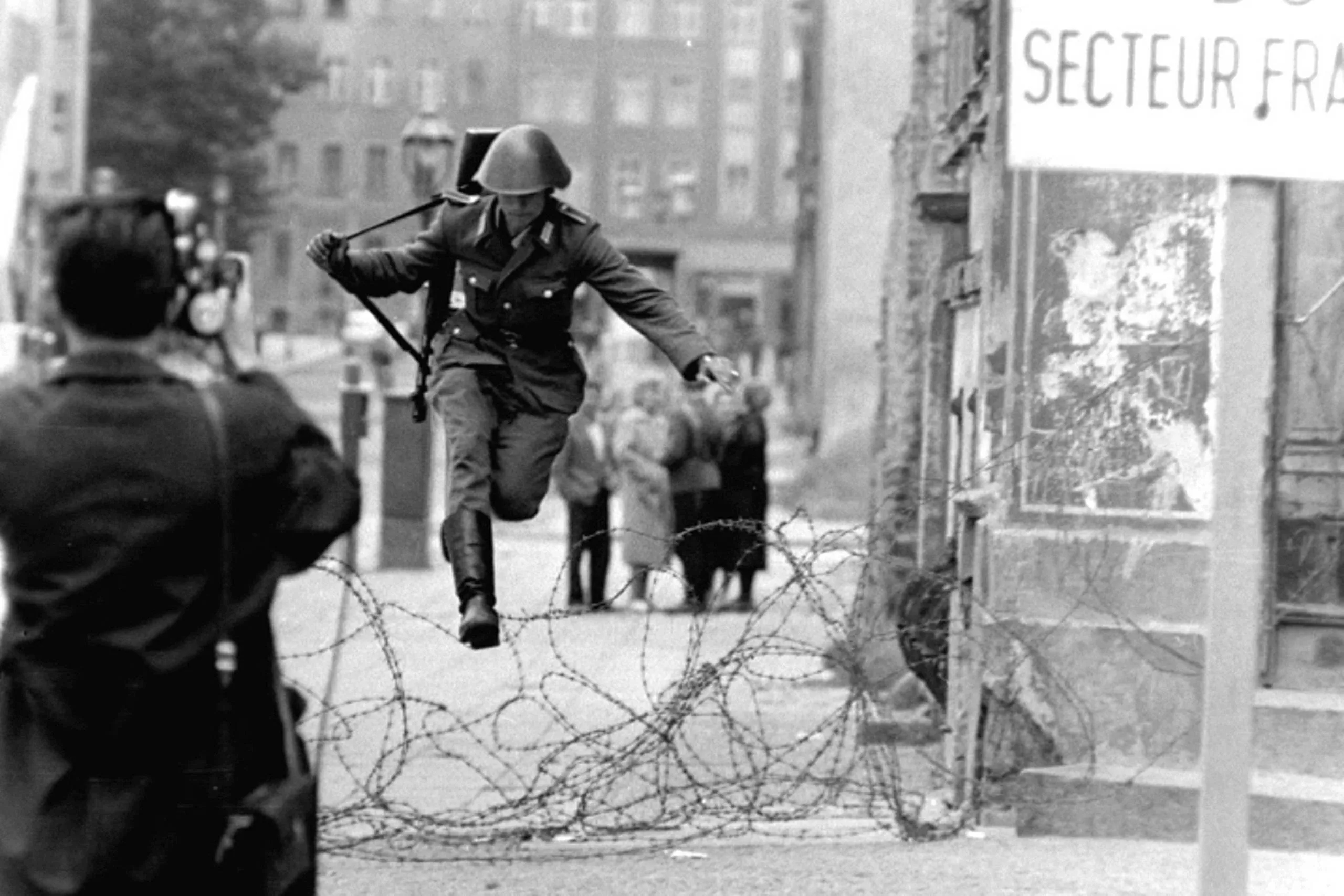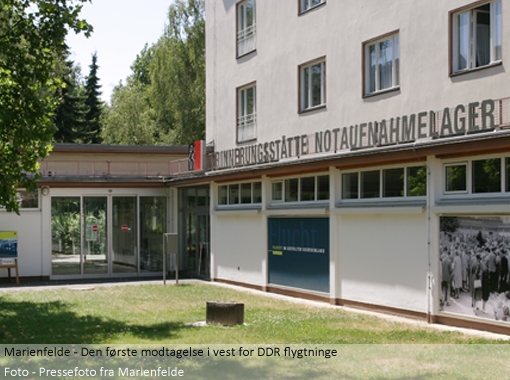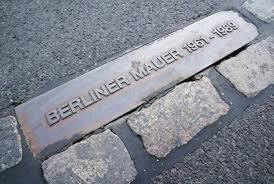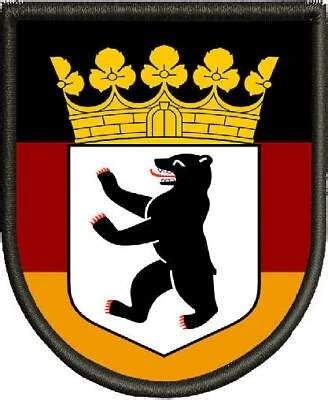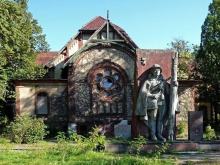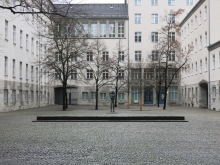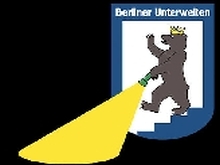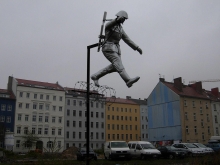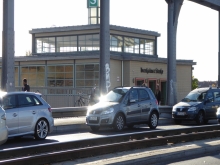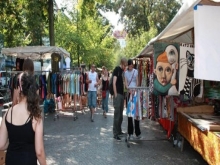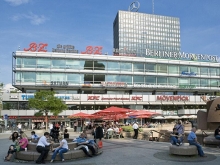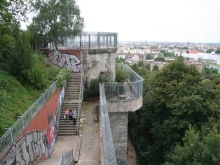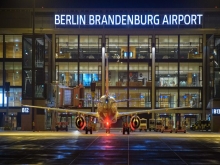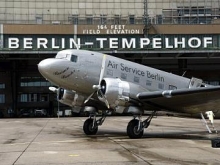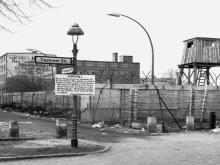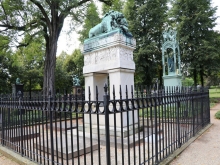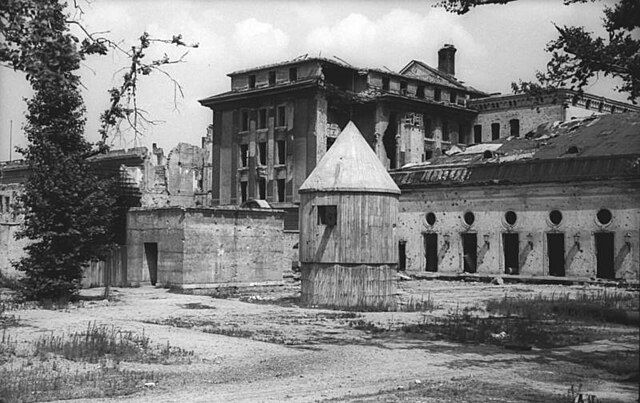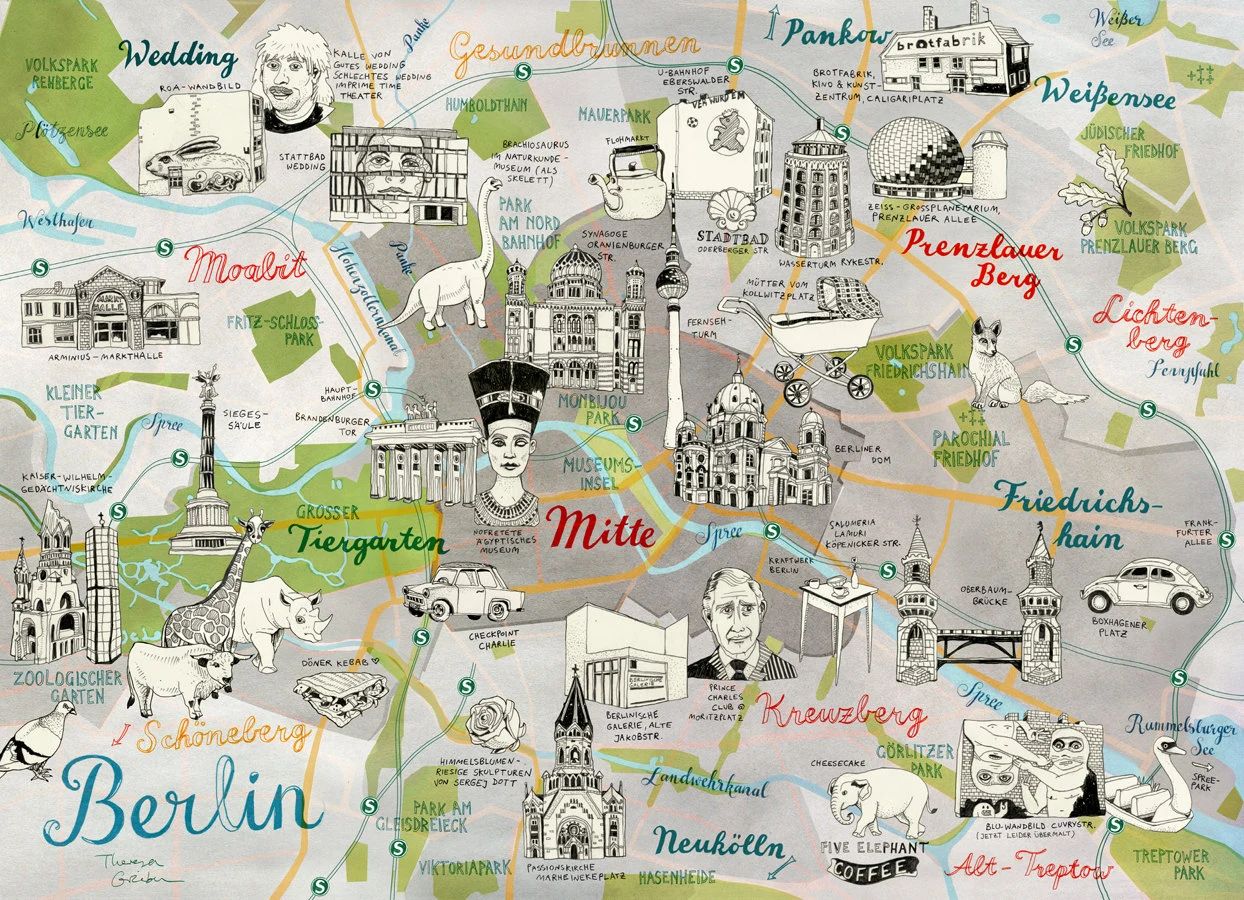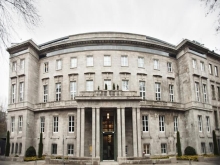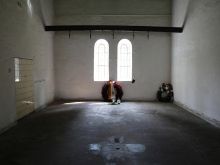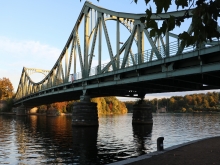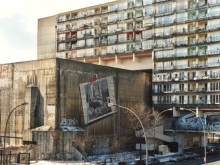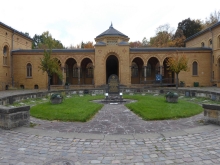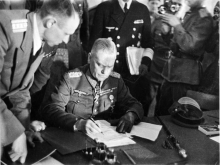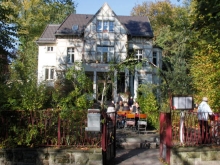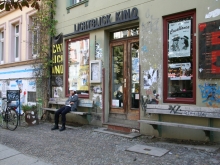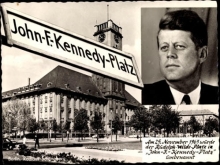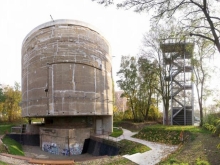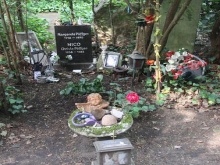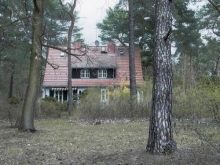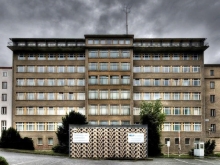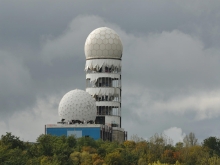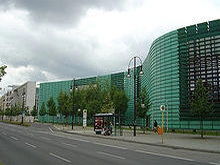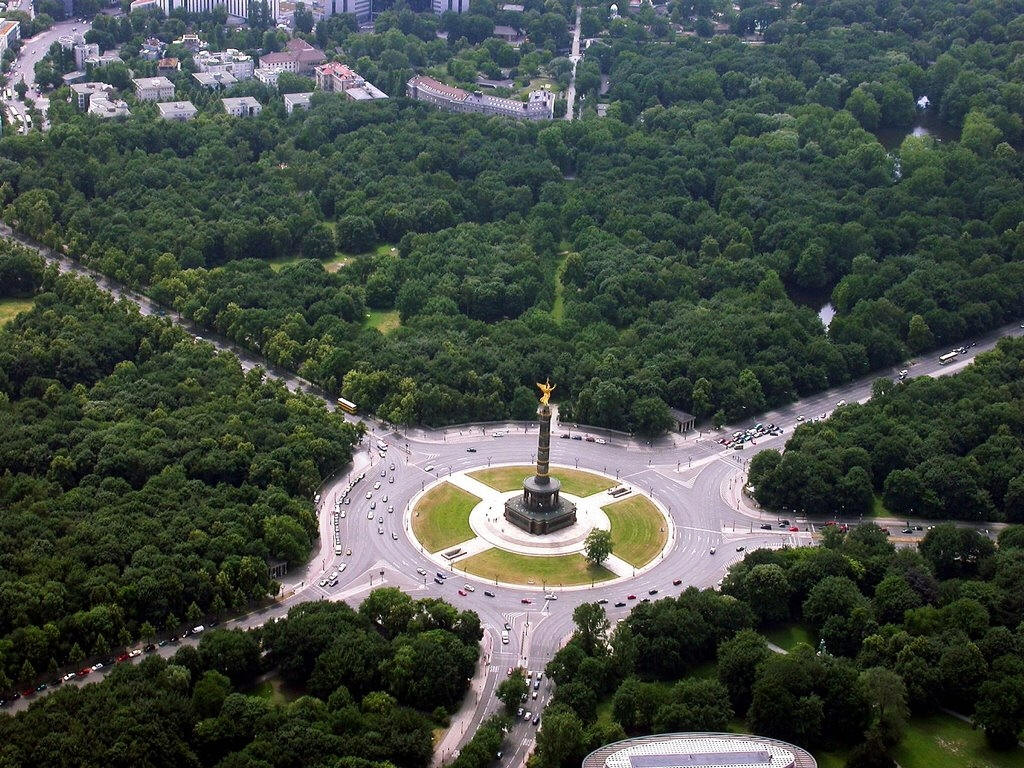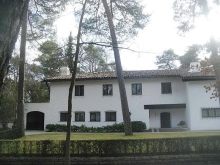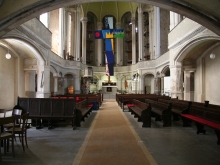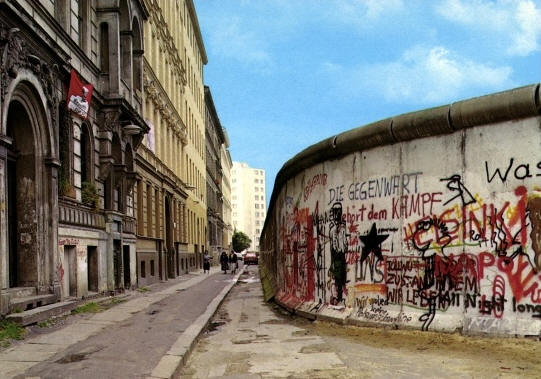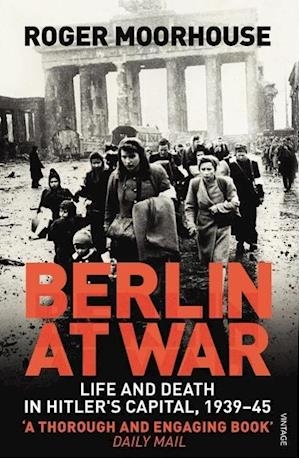Other places of interest and excursion destinations in other countries:
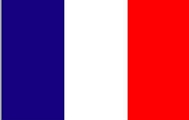 |
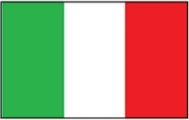 |
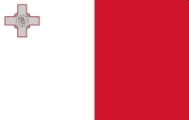 |
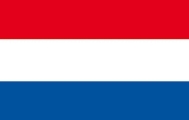 |
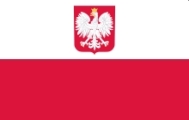 |
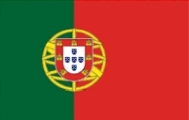 |
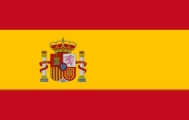 |
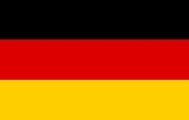 |
FR |
IT |
MT |
NL |
PL |
PT |
ES |
DE |
Link: Worth visiting in Berlin
Berlin - Villa Riefenstahl

Villa Riefenstahl

Leni Riefenstahl (1902-2003) was a German actress, dancer, film
photographer and not least director, famous for her so-called aesthetic
sense. She became especially famous for her controversial work as
Hitler's propaganda director. Among other things, she made the very famous
propaganda film "Triumph des Willens". It is hard to understand she avoided
having to account for her atrocities after the war as she greatly
promoted Nazism with her films.
The house - Villa Riefenstahl - and the garden were built in the years 1935
- 1936. The architect Ernst Petersen, who was originally commissioned, had
known Leni Riefenstahl for a long time; he had worked with her in relation
to various films shot in the mountains under the direction of Arnold Fanck.
Riefenstahl had also seen buildings by Hans Ostler in Garmisch-Partenkirchen
and consulted him in the planning. Later, both architects were jointly
responsible for the design, and they created the plans in close
collaboration with Riefenstahl. The alpine appearance of the house reflects
Riefenstahl's connection to the mountains. Leni Riefenstahl sold the villa
shortly after World War II and moved from Berlin.

After the German troops had taken Paris, Riefenstahl sent the following telegram to Hitler:
"With indescribable joy, deeply moved and filled with burning gratitude, we share with you, my Führer, your and Germany's greatest victory. You transcend the humanly possible and achieve unparalleled achievements in the history of mankind. How can we ever thank you?"

Adolf Hitler and Leni Riefenstahl,

Leni Riefenstahl and propagandaminister Joseph Goebbels

Former Minister of Armaments Albert Speer and Leni Riefenstahl - 1972 Olympic Stadium in Berlin
Leni Riefenstahl was an active player both in promoting Hitler and Nazism, but also in promoting the view of humanity that underpinned the extermination of millions of Jews, Gypsies, mentally ill, dissenters - children and adults alike. That she later, just as minister Albert Speer, claimed that she knew nothing about it, because she, like Speer, was busy with her work, is just a despicable lie. Hitler did not commit all these crimes alone or in the dark and he would never have come this far without people like Leni Riefenstahl, who in addition to making her cinematic talent available was also often seen in the company of Nazi leaders such as Goebbels, Speer and Hitler and she public expressed her utter admiration for Nazism and "The Führer".
By promoting and supporting the Nazis she destroyed her film career because nobody would "play" with her after the war because of her reprehensible actions before and during the war. She may not have shouted as high as Propaganda Minister Joseph Goebbels, but promoting the terror regime she did - And she wasn't just a passive player, she was an active one and that is her crime.

Leni Riefenstahl 1902 - 2003
Adresse:
Villa Riefenstahl
Heydenstrasse 30, 14199Schmargendorf, Berlin
Public transport:
U Bahnhof Berlin Heidelberger Platz eller U Podbielskiallee
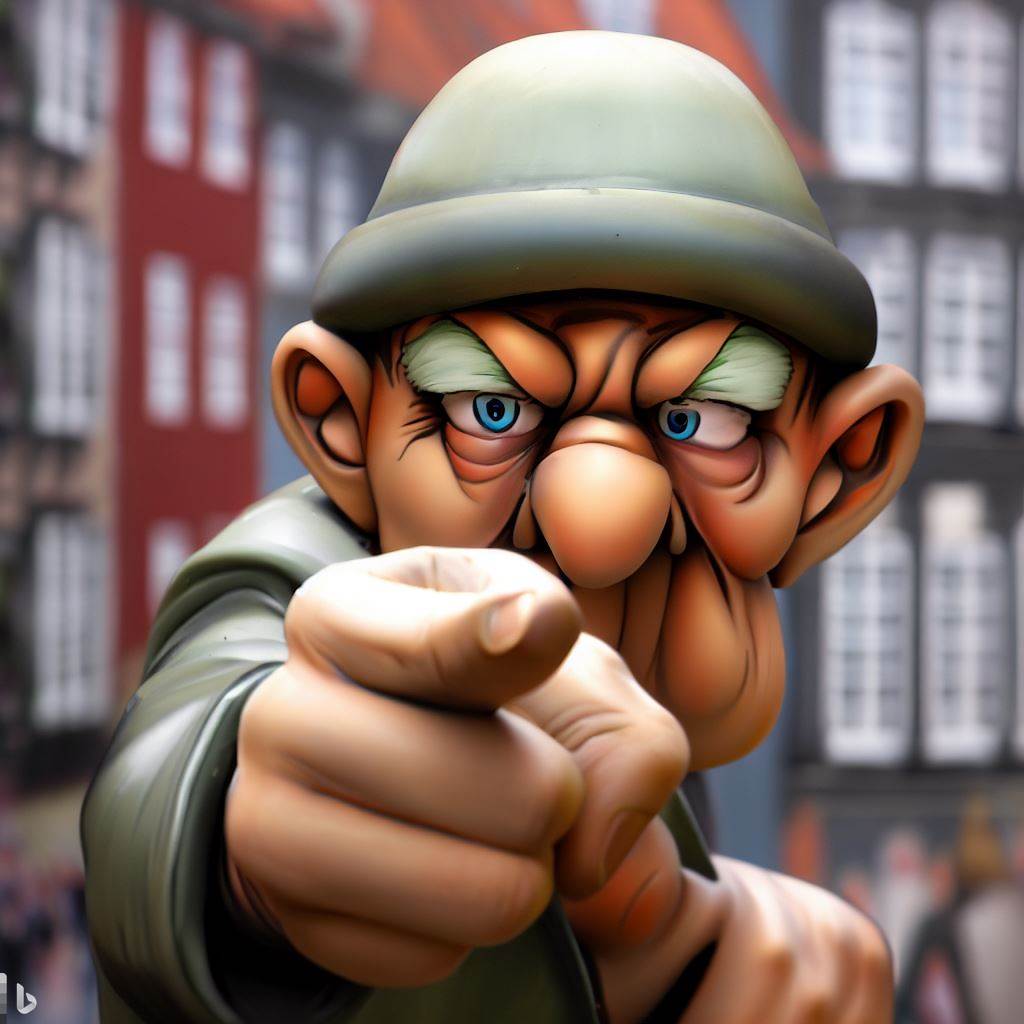
Wanted
Berlin is always worth a visit - summer or winter
- but where to go? Here are some slightly unusual and very different suggestions for places I like to go.
D E F
G H I J K
L M N O P Q R S
S T U V X Y Z
Recreational areas:
Food and drinks:
Postcard Berlin, Sebastianstraße, Berliner Mauer Shortcut to postcards of the Berlin Wall
A recommendation
Berlin's landmark is a bear
I have visited Berlin for many years. The first time was in the late 70s with a school
class where the stay made such a big impression on me that I have been coming there
very often ever since.
The first times I visited the city, it was brutally divided into East and West and
separated by the famous and infamous Berlin Wall, which from one day to the next
separated families and friends.
The history of the construction of the Berlin Wall is long and begins in the division of Germany
after World War II, where the four victors and allies - the Soviet Union, the United States, England and France divided the country
between them. The capital, Berlin, from which the Allies were to jointly rule Germany, was also divided into four occupation zones,
which each Allied ruled, however, in accordance with the overall agreements the four Allies had jointly
But the marriage was not a happy one and, in short, the differences between the United States, England and France, on the one hand, and
the Soviet Union, on the other, became so big that cooperation was almost impossible.
The lack of cooperation led the Soviet Union to voluntarily decide to form the state of the GDR
in their part of Germany, where West Berlin were located - now as a desert island in the east.
In the GDR, however, they had the problem that many of its inhabitants would rather live in the somewhat richer "West", where the Americans, unlike the Russians,
provided financial assistance for the reconstruction after the "total war". In the Soviet-occupied German territories, the Russians instead
dismantled most of the production equipment and moved it to the Soviet Union, and to make matters worse, the Germans were also ordered to
pay war damages.
As the flow of refugees from the GDR increased, often by several thousand people a day, the
then government of the GDR felt compelled, with the consent of the Soviet Union, to confine its population, otherwise within a few years there would be so few people
left in the state no longer really would work. The flight to the West among young people, skilled and highly educated was so that the situation was unsustainable
and something had to be done.
The iconic photo of the soldier who escaped from the
GDR to the west
Well arrived in West Berlin, you had to sign up in e.g. the Marienfelde refugee camp to apply for a residence permit.
Here one was interrogated and later typically assigned to a job according to qualifications and an apartment. Many former GDR citizens have passed through
Marienfelde, where there now also is a museum. It is estimated that approx. 1.35 million people passed through the camp in Marienfelde until the fall of
the wall in 1989.
West Berlin was a thorn in the side of the so-called communist regimes, which on several
occasions tried to get the West Allies to leave Berlin and thus let it become part of the GDR, but when that failed, the Berlin Wall or "Antifaschistischer Schutzwall"
as it was officially called in the GDR was built in 1961.
"Notaufnahmelager"
Marienfelde (refugee camp)
The "Schandmauer" - or wall of shame as it was called in most of the western world - came to surround the whole of West Berlin.
The day of shame - 13 August 1961 - was the day when a 41 km long wall was started and further developed the following years right up to the fall of the wall in 1989. Memorial
It is estimated that approx. 14,000 border soldiers guarded the wall
- which by the way consisted of several walls - even though 860,000 mines had been laid, more than 300
watchtowers erected, trenches built and more than 600 well-trained watchdogs exposed.
Throughout the period from 1961 - 1989, it is estimated that there were more than 5,000 escape attempts and that
a little more than 3,000 people were apprehended. Some of these escape attempts took place through the 57 escape
tunnels dug under the Berlin Wall. In all, it is believed that 190 died during escape attempts.
World War II and the Berlin Wall - even after its dismantling - have of course left their mark
on the city of Berlin and there is no doubt that these events have had a colossal historical significance, but one
must not forget that Berlin is also an extremely interesting and modern city, where life is lived and where the
cultural offerings are enormous.
Wanted
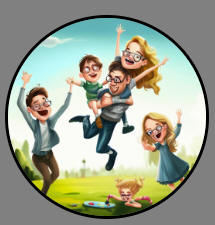
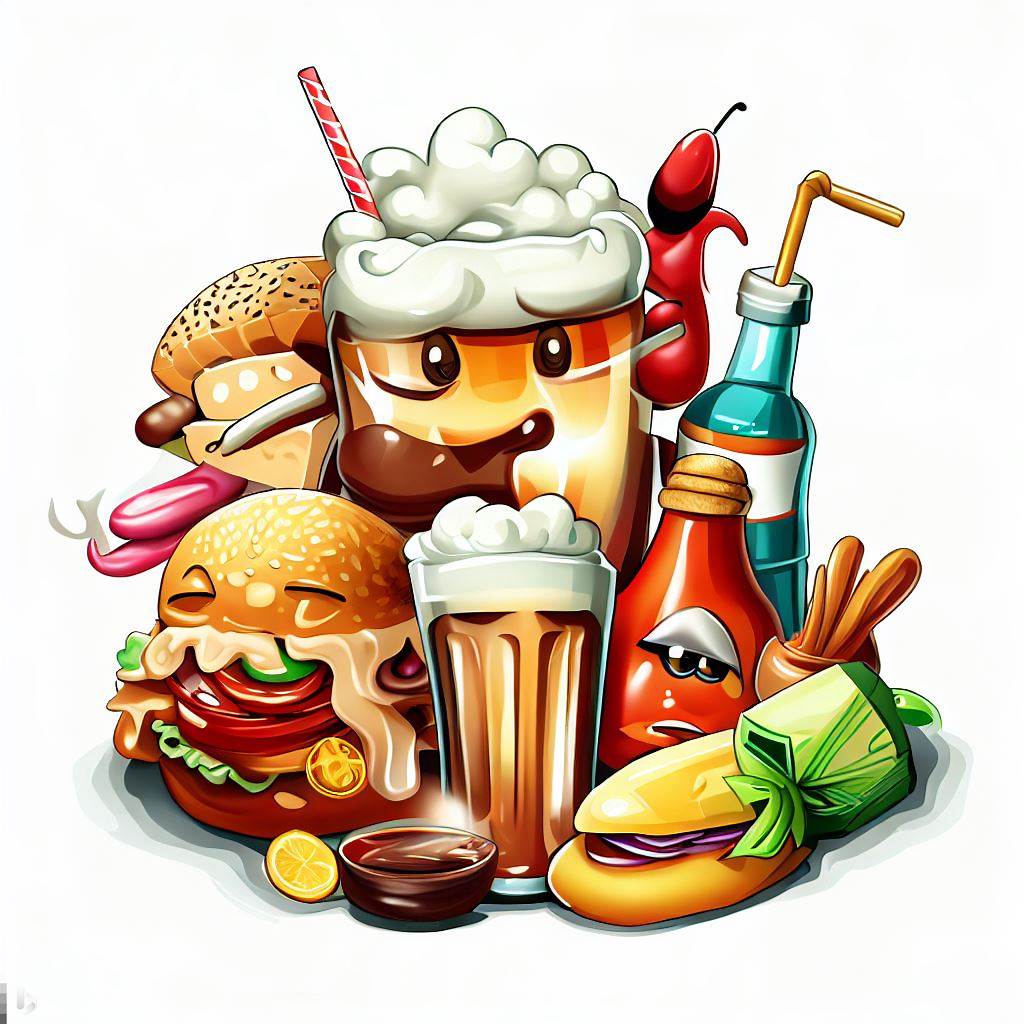
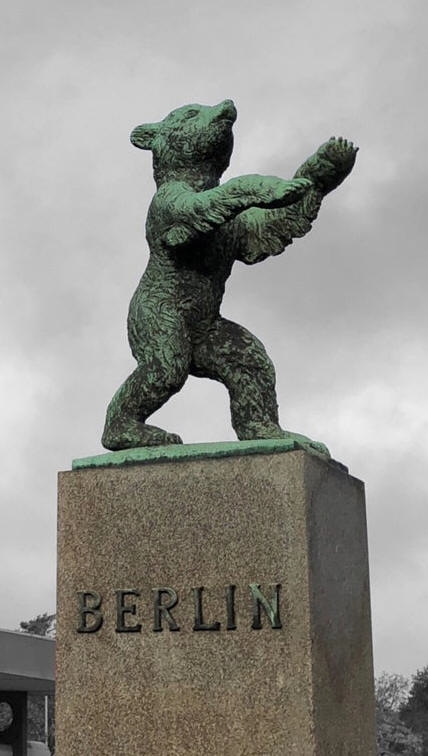
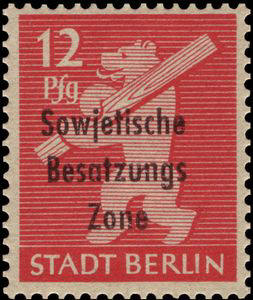
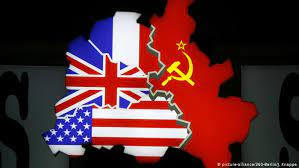
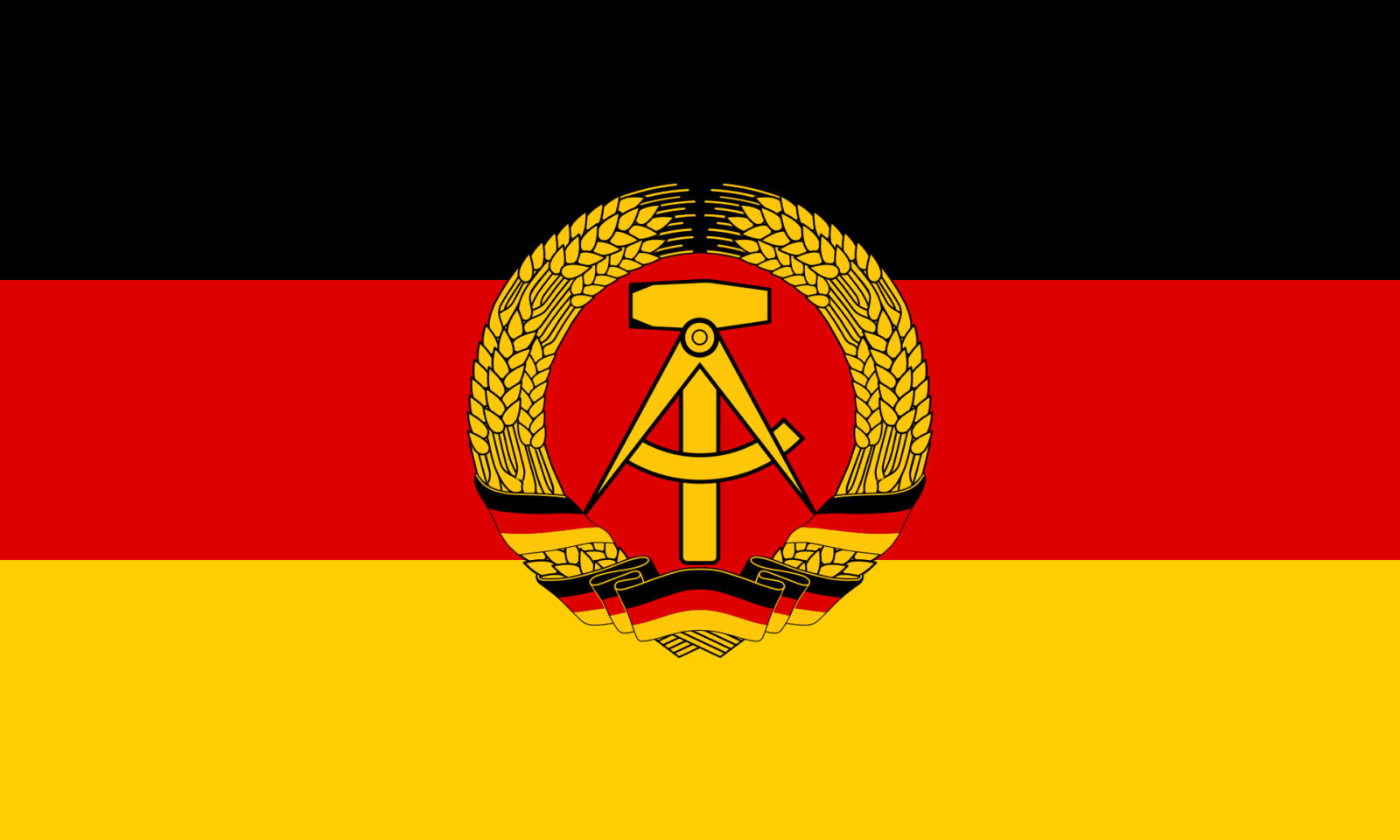
The GDR had otherwise promised its population that after some hard years
of toil and toil, the reward would come, but when you could see, not
least via western TV, how the nation actually fell further and further
behind in relation to the west, many began to doubt truth value of the
statement. For the same reason, large parts of the population began to
seep to the west and this could most easily happen via Berlin, where the
borders between the various sectors were still open.
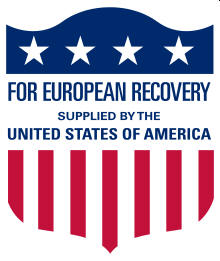 When a GDR citizen had decided to become a "republican
refugee", he or she typically dressed like people from the West
and then subsequently bought a train ticket to Berlin , if one did not already live there. In Berlin, the trip typically continued by "U-bahn" to West Berlin.
During such an escape, no significant luggage could be included, as one would easily be recognized as what one was - a refugee - and then taken to the police
station for questioning and imprisonment. Although there was free passage to West Berlin, many East German border guards were posted at the border and were
largely solely responsible for keeping an eye on any refugees.
When a GDR citizen had decided to become a "republican
refugee", he or she typically dressed like people from the West
and then subsequently bought a train ticket to Berlin , if one did not already live there. In Berlin, the trip typically continued by "U-bahn" to West Berlin.
During such an escape, no significant luggage could be included, as one would easily be recognized as what one was - a refugee - and then taken to the police
station for questioning and imprisonment. Although there was free passage to West Berlin, many East German border guards were posted at the border and were
largely solely responsible for keeping an eye on any refugees.
